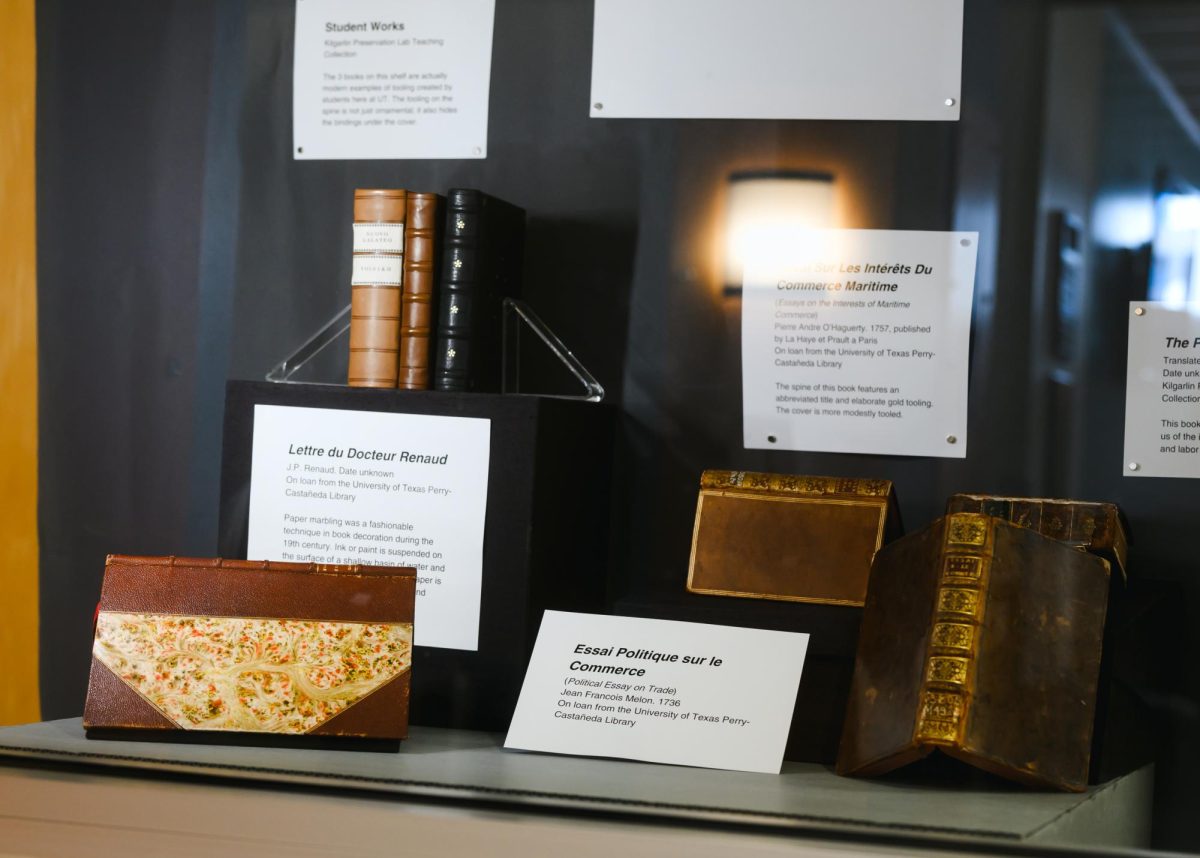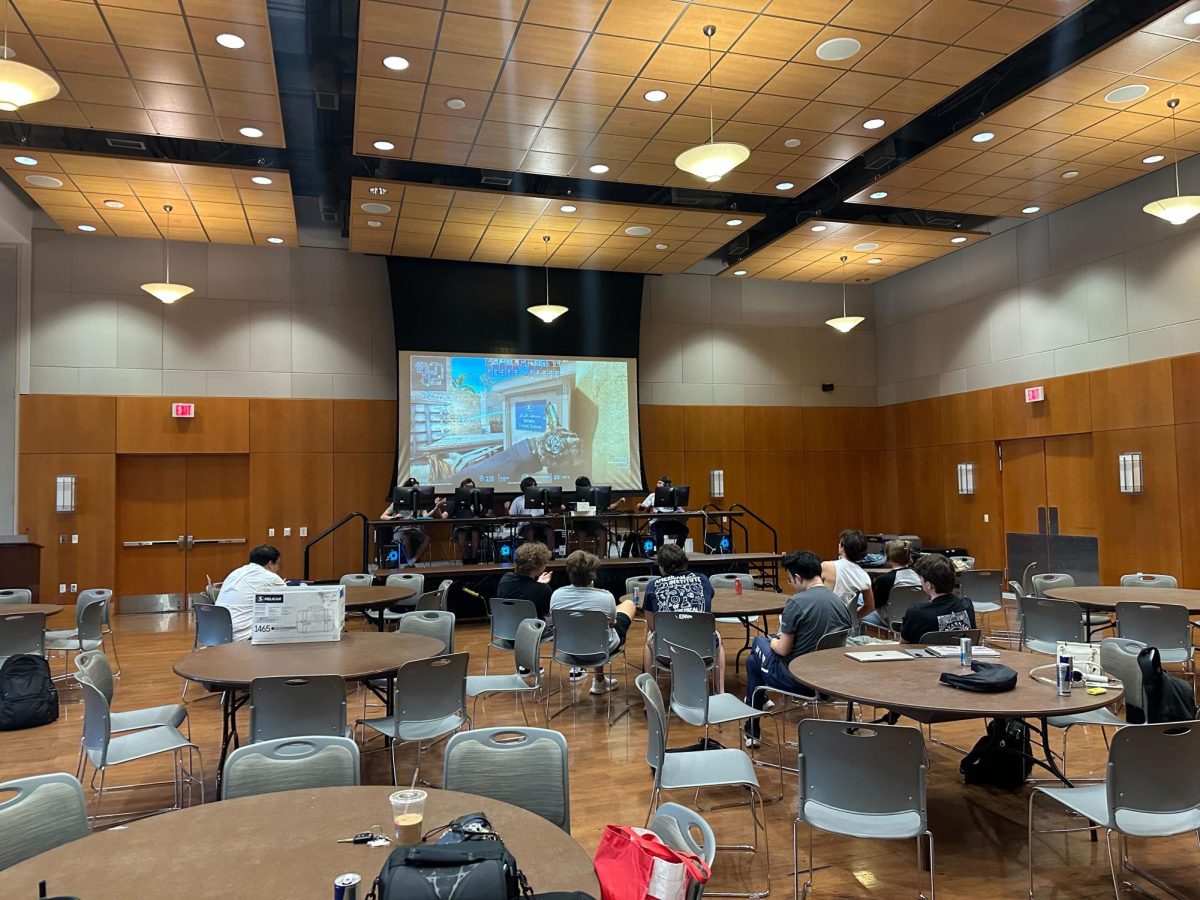Most men don’t like to pee when they’re being watched. Others can’t pee when someone is too close because feeling exposed prevents the stream of other urinal patrons. Some just rue the entire construction of a bathroom because it presents both situations.
Two prominent examples are the restrooms of the Robert Lee Moore Hall and the southern portion of Welch Hall.
Every floor of the colossal RLM features a men’s restroom with three urinals lined up side by side, flanked by a sink. There are no partitions between the urinals, or between the urinal and the sink which neighbor each other.
Squeezed in between the sink and the urinal is the paper towel dispenser. Hidden in a nook on the opposite wall is another sink which lacks paper towels. Welch features men’s restrooms similar in construction, only the paper towel dispensers are located on the opposite wall, and two sinks are squeezed onto the same wall as the urinals.
Although in theory a restroom is just a restroom, the actual practice of urinating is a delicate act of tact. Men, often considered the cruder of the two sexes, have a refined code of conduct in place throughout the restrooms of America, and those who break these transcendental codes are duly noted and considered with a degree of distaste and curled lips. The issue with the particular restrooms detailed is that they present situations in which man code is compromised and needs amendment.
First, though, it’s important to know what is acceptable bathroom behavior. In light of recent experiences, it is obvious people need to be reminded what is awkward.
Talking while relieving yourself, for example, is to be avoided. Whether it’s Greg Davis’ failure or breakthroughs in cancer research, the restroom isn’t a place for discussion.
“When people try to talk to you, it’s just eerie. You try to be polite, but deep down inside you’d really rather them just leave you alone,” said Forrest Moore, an exercise science sophomore.
And where conversation is bothersome, incidental body contact below the waist can completely ruin a bathroom experience. The accepted precept is to not mention the situation at all, not even to apologize. Discussing the event is regarded as bringing attention to it, which: a) suggests there is some ulterior motive, and b) starts a conversation in the bathroom, a previously stated misstep.
Other habits are purely annoying, and though we all want to look good for that girl we conveniently sat next to on the first and every subsequent day of class, gazing into the mirror impedes other people’s bathroom use.
The sink is designed for hand washing, but tends to get claimed for the sake of hair wetting. This issue is becoming wildly rampant during passing periods, when the restrooms are most crowded.
As the descendants of patriarchal societies, tradition is important to men, so though the age-old rule of only two shakes may not be sufficient, it still stands. Any vigorous shaking is clearly obvious because of the bobbing of a shoulder. Of course, breaking this rule is less atrocious if there is plenty of space between two urinal users; leaving this space is also a traditional rule.
If there is no one in the restroom, courteous practice is to use a urinal at the far end. Ideally, a second person would pick the urinal furthest from the occupied one; a third, try and keep as much space between himself and others as possible.
Perhaps what bothers restroom users most is someone with wandering eyes, and making eye contact with that person.
“Eye contact in the restroom is a definite illegal action in the realm of acceptable restroom behavior. Even worse is wandering eyes. It makes you feel violated,” Moore said.
If one has the impertinence to break this inviolable rule and makes eye contact, eyes are to be averted to a safe zone, such as a wall.
In the instances of the RLM and Welch buildings — and any other bathrooms of similar construction — instances not covered by the traditional rules arise. These must be looked at with a considerate and determining eye.
When the paper towel dispenser is above a urinal, one may debate on going for paper or not. Michael Musslewhite, a philosophy sophomore, says no.
“If there’s someone peeing, I don’t want to reach over their shoulders,” he said. “The other day I had to walk around with dripping hands.”
It should be noted that if one cannot wait for said urinal to become vacant, it is acceptable to mutter “excuse me” or to clear one’s throat, not as a matter of opening conversation, but so as to not take a man off-guard when you reach over him for a paper towel. Remember, jeans are a viable towel.
In these restrooms, a patron may find that someone is using the urinal furthest from the sink while another washes their hands in the sink neighboring a urinal. Of the people asked, 100 percent felt their ability to apply proper protocol was taxed. The same men expressed that they would prefer potentially rubbing shoulders with someone else relaxing their bladder than having a hand washer at their side; accordingly, this will likely find its way into acceptable bathroom etiquette.
Gil Moss, a mathematics graduate student and calculus teaching assistant, spends most of his time in the RLM, and is thus an authoritative voice on the issue.
“I always go for the pee-er,” Moss said. “There’s a strategy to it. If there’s no one else peeing, but someone washing, I go to the middle so I’m away from the sink.”
This way, Moss said, he’s still comfortable, but if someone else arrives to arrest their urinary urgings, they can take the furthest urinal.
Most people enjoy their privacy, and though the installation of textile boards called “partitions” would solve these issues and rid the need for rule revision, a man can expect to invariably find himself in one of these situations at some point in his life.
Regardless of bathroom construction, there is still the classic canon of bathroom etiquette to consider. With a little guidance and consideration for the other man, even the best of us can handle an awkward restroom situation with some grace.

















